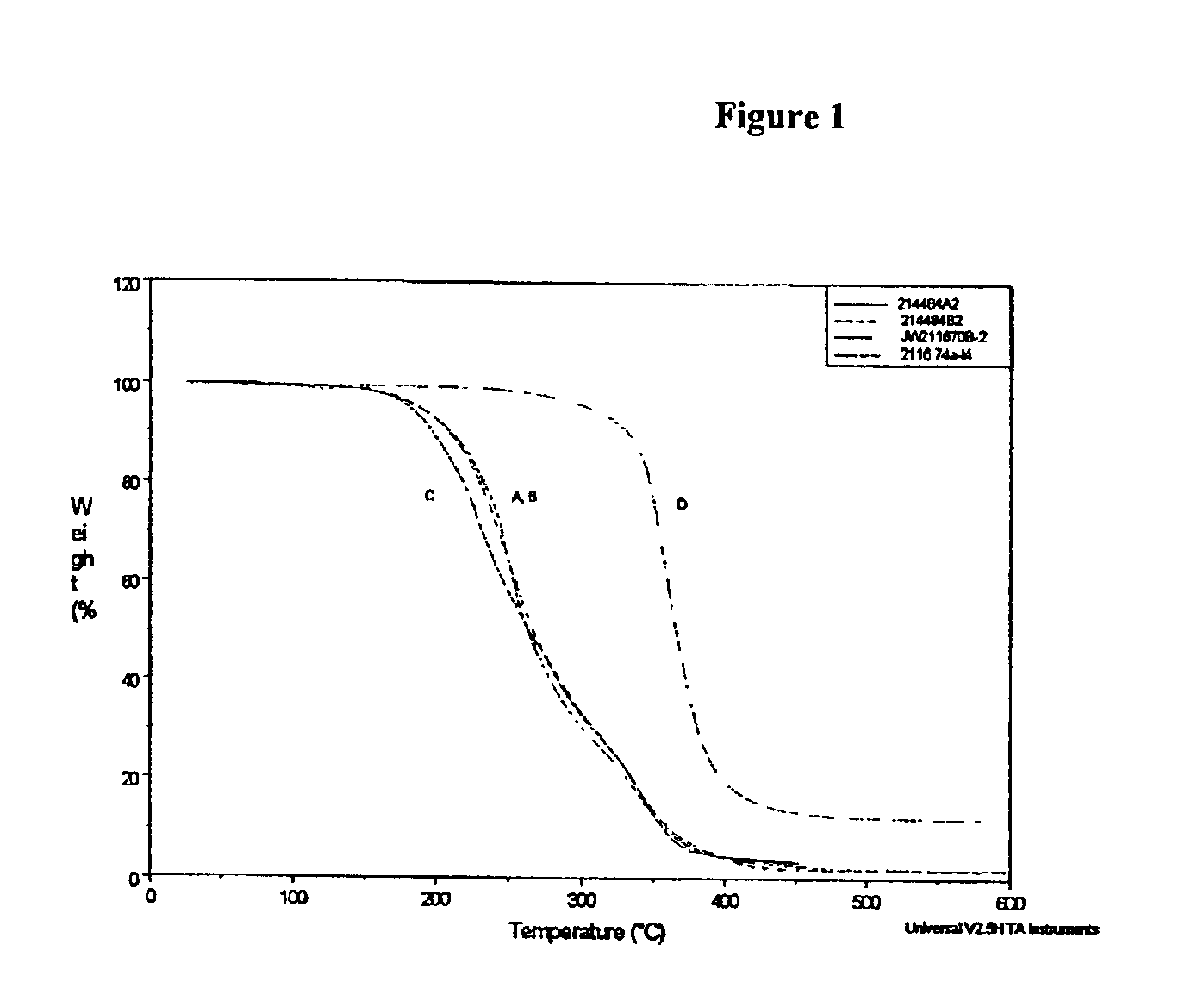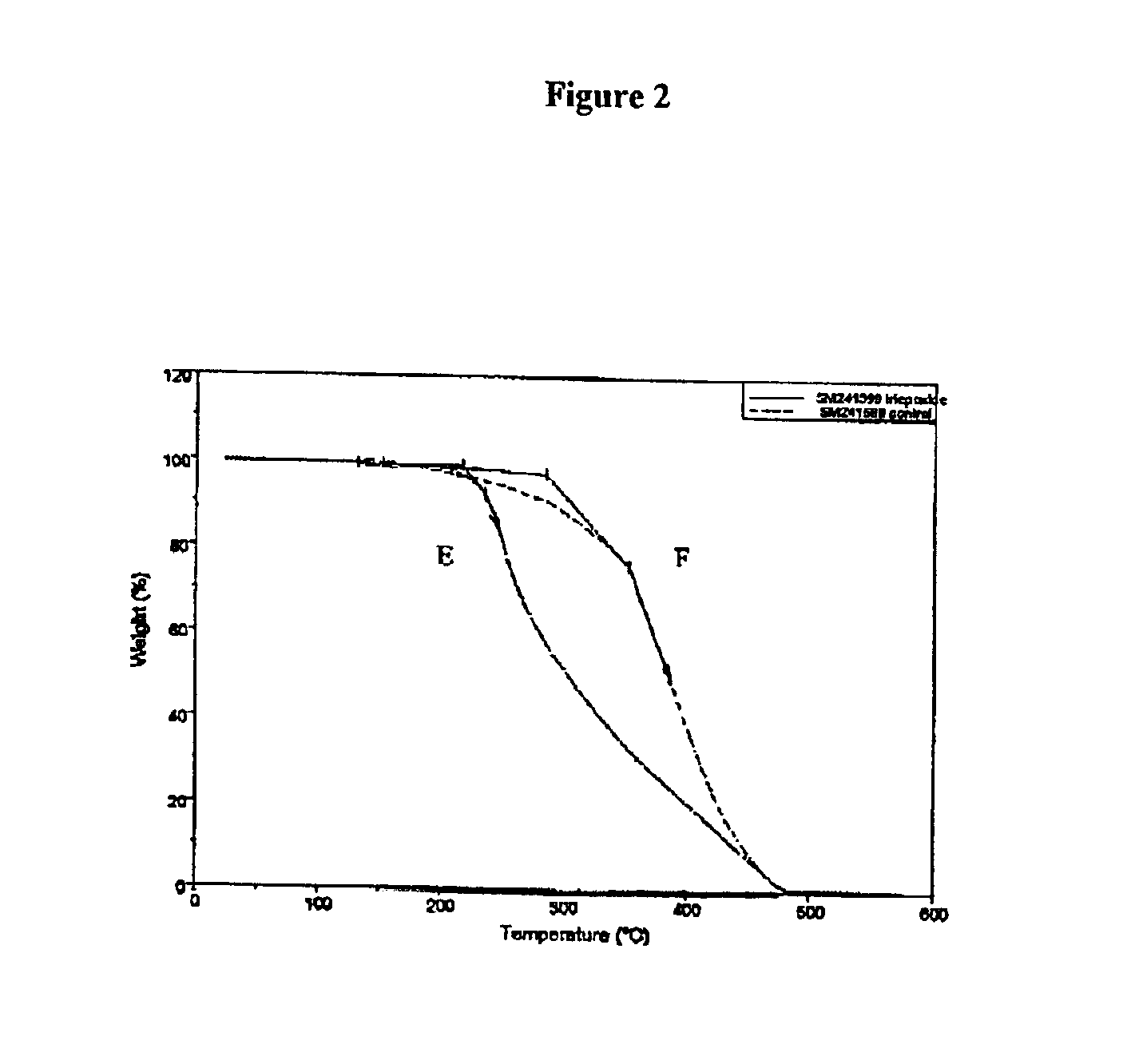Thermally reworkable epoxy resins and compositions based thereon
a technology of epoxy resin and composition, which is applied in the direction of adhesive types, coatings, organic chemistry, etc., can solve the problems of easy contamination of the substrate, difficult to replace the assembly without destroying or scrapping the structure, and no disclosure about the treatment of the resin which remains on the substrate, etc., to achieve the effect of easy cleaning and low production cos
- Summary
- Abstract
- Description
- Claims
- Application Information
AI Technical Summary
Benefits of technology
Problems solved by technology
Method used
Image
Examples
example 1
Synthesis of bis-1-(1′,6′-hexoxy)ethyl-3,4-epoxycyclohexane carboxylate (2) (BHEC)
[0091]This example describes a method for preparing a curable epoxy monomer according to the present invention from commercially available reagents. The reaction scheme (Scheme 1) is illustrated below and employs a divinyl ether and a mono-alkenyl carboxylic acid.
[0092]1,6-Hexanediol divinylether (17.0 g; 0.05 moles) was added to a 50 mL reaction flask fitted with a thermocouple, magnetic stirrer, addition funnel and heating mantle. The monomer was heated to 75° C. and 3-cyclohexene-1-carboxylic acid (25.2 g; 0.1 moles) was added dropwise over 25 minutes while the temperature was maintained between 75-78° C. After the addition was complete, the stirred mixture was heated for an additional 5 hours and cooled. The crude liquid was vacuum filtered through a short column of basic aluminum to give the intermediate product bis-1-(1′,6′-hexoxy)ethyl cyclohex-3-enecarboxylate (1) (31.96 g; 76% yield). The str...
example 2
Synthesis of bis-3,4epoxycyclohexane carboxylate of 1,4cyclohexane dimethanol divinyl ether (ECCD)
[0095]
[0096]This example describes a method of preparing a curable epoxy monomer according to the present invention using a divinyl ether and a mono-alkenyl caroboxylic acid as the starting materials. Each were commercially available.
[0097]The bis-epoxide monomer ECCD (3) shown above was prepared in a manner analogous to that described in Example 1. Initially a mixture of 1,4-cyclohexane dimethanol divinyl ether (35.00 g; 0.18 moles) and 3-cyclohexene-l -carboxylic acid (45.00 g; 0.36 moles) was heated at 75-100° C. for 3 hours to prepare the intermediate di-unsaturated α-alkoxyester (100% yield). The intermediate was then epoxidized with 3-chloroperoxybenzoic acid at 0-3° C. according to the process described in Example 1. The product was isolated in 91% yield. The structures of the intermediate and final product were confirmed by 1H NMR and IR spectral analysis.
example 3
Synthesis of tris-3,4-epoxycyclohexane carboxylate of trimethylolpropane trivinyl ether (ECCT) (4)
[0098]
[0099]This example describes a method used to prepare an inventive epoxy monomer from a commercially available trivinyl ether and a commercially available mono-alkenyl carboxylic acid. A similar reaction scheme to that shown in Example 1 was used to make the epoxy monomer of the present example, i.e. ECCT (4).
[0100]Trimethylolpropane trivinylether (35.4 g; 0.167 moles) was added to a 250-mL reaction flask fitted with a thermocouple, magnetic stirrer, addition funnel and heating mantle. The monomer was heated to 70° C. and 3-cyclohexene-1-carboxylic acid (63.0 g; 0.5 moles) was added dropwise at such a rate as to maintain the temperature between 73-75° C. After the addition was complete, the stirred mixture was heated for an additional 7 hours and cooled. The crude product was dissolved in dichloromethane (100 mL) and the solution passed through a short column of basic alumina. The...
PUM
| Property | Measurement | Unit |
|---|---|---|
| Equivalent mass | aaaaa | aaaaa |
| Temperature | aaaaa | aaaaa |
| Temperature | aaaaa | aaaaa |
Abstract
Description
Claims
Application Information
 Login to View More
Login to View More - R&D
- Intellectual Property
- Life Sciences
- Materials
- Tech Scout
- Unparalleled Data Quality
- Higher Quality Content
- 60% Fewer Hallucinations
Browse by: Latest US Patents, China's latest patents, Technical Efficacy Thesaurus, Application Domain, Technology Topic, Popular Technical Reports.
© 2025 PatSnap. All rights reserved.Legal|Privacy policy|Modern Slavery Act Transparency Statement|Sitemap|About US| Contact US: help@patsnap.com



